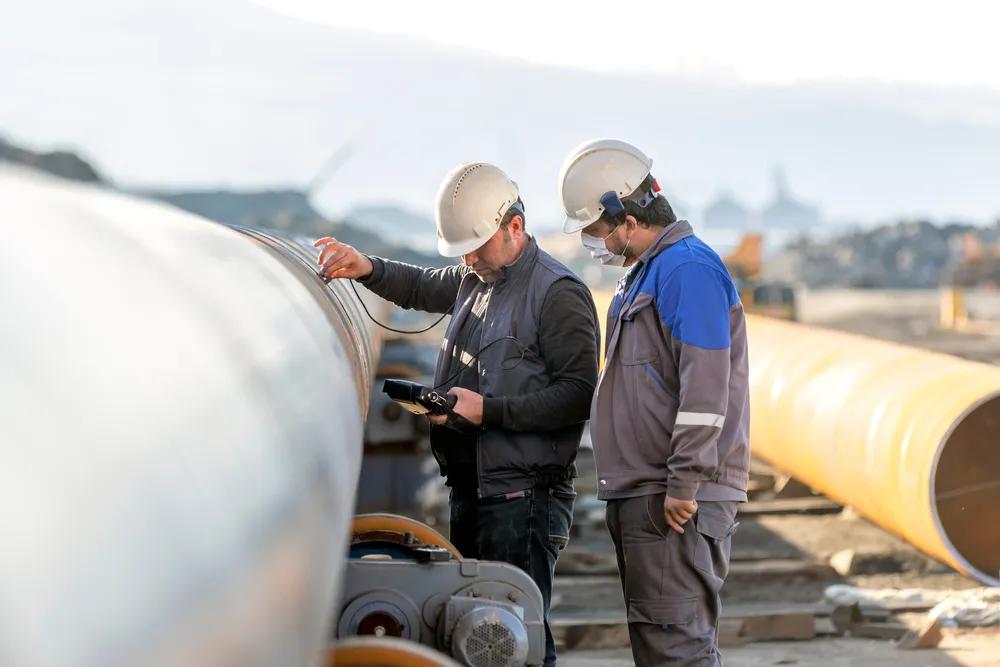Advanced Formation Evaluation in Carbonate Reservoirs Course
Introduction:
For successful exploration and production in the oil and gas industry, mastering advanced formation evaluation and interpretation of carbonates is critical. This course focuses on pore geometry and the determination of various aspects that control carbonate rocks. Among the parameters studied are the Archie variable m, the saturation exponent n, and the influence of microporosity.
Designed to enhance judgment in the evaluation of complex carbonate reservoirs, this intermediate course also investigates dolomitization mechanisms, aiding participants in understanding carbonate geology. The program emphasizes formation evaluation methods specifically tailored for carbonates using specialized logging instruments.
Participants will learn about imaging techniques such as Nuclear Magnetic Resonance (NMR) imaging, acoustic studies, and the use of imaging tools crucial for analyzing vascular and fractured networks within carbonate rocks. Other pertinent topics covered in the course include capillary pressure measurement, J-Function applicability, and petro-rock classification.
Objectives:
Participants in this Advanced Formation Evaluation in Carbonate Reservoirs course will:
- Delve into diagenesis and carbonate rock formation processes.
- Establish principles of deposition, NMR technology, and the use of NMR scanners.
- Update knowledge on acoustic measurements and their implementation with acoustic scanners.
- Emphasize the usage of evaluation tools in logging data quality control for formation evaluation.
- Provide insights into borehole imaging, focusing on ultrasonic and micro-resistivity imaging.
- Elaborate on the principles of neutron logging and dielectric logging.
- Expose methods for estimating permeability of carbonate rock formations.
- Explain the new Connectivity Theory for carbonate interpretation without relying on Archie's equation.
- Highlight the importance of flow units and insights gained from Lorenz graphs.
- Assess core analysis and NMT T2 data in relation to capillary pressure.
- Understand various rock types, including J-Function, Winland functions, and ADNOC criteria.
Training Methodology:
- Case studies
- Comprehensive laboratory practices
- Participative sessions
- Thorough group work
- Computer instruction
- Exercises on data interpretation
- Exercises on simulations
- Guest lectures by specialists
- Discussions with questions and answers
- Problem-solving activities
- Application of study through peer interaction and feedback
Course Outline:
Unit 1: Geology of Carbonates and Dolomitization
- In-depth discussion on the geology of carbonates and dolomitization.
- Study of NMR technology, including its application in scans.
- Hands-on experience with hydraulic acoustic scanners and the significance of accurate acoustic measurements.
- Focus on the interaction of diagenesis and carbonate geology.
- Ensuring understanding of deposition processes, NMR technology, and NMR scanner usage.
- Consideration of acoustic measurement methods and applications in acoustic surveying.
Unit 2: Applications for Formation and Logging
- Applicability of micro-resistivity and ultrasonic imaging techniques for borehole characterization.
- Construction of sigma logs and principles of neutron logging with pulsed neutrons.
- Understanding the basic principles of dielectric logging and capabilities of dielectric scanners.
- Systematic approach to understanding the potential applications of the variable-M and its influence on formation factor.
Unit 3: Dual Porosity, Vugs, and Wettability
- Discussion on the effect of variable-N and its relationship with wettability.
- Explanation of how vugs and fractures impact resistance measurements in carbonate rocks.
- Examination of dual porosity systems consisting of macro and micro pores.
- Detailed exploration of wettability and the influence of variable-N, vugs, and fractures on resistivity readings.
- Emphasis on macro-, micro-, and dual porosities, along with a qualitative evaluation of dual porosity in carbonate rocks.
Unit 4: Permeability Estimates and Flow Units
- Introduction to the Connectivity Theory.
- Presentation of a new carbonate interpretation approach that does not depend on the Archie Equation.
- Familiarization with flow unit calculation techniques.
- Appreciation of the significance of Lorenz plots.
- Techniques for estimating permeability within carbonate frameworks.
Unit 5: Capillary Pressure and Rock Types
- Methods for performing capillary pressure measurements through core analysis data interpretation.
- Examination of capillary pressure associated with the J-Function and the subsequent NMT T2 transformation.
- Evaluation of rock types based on Winland R35 criteria and the ADNOC Pore Model.


















